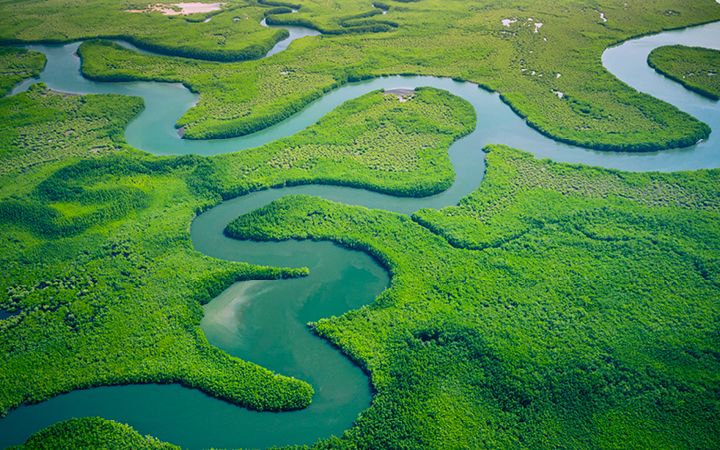
Transformational change is needed to address climate change
We sat down with Jessica Kyle, director of climate change and sustainability at ICF—whose expertise spans nearly 20 years in climate finance and environment programs and programmatic modalities—to discuss the importance of transformational change. This interview has been edited and condensed for clarity.
Q: Why is the theory of transformational change so important in the context of climate change?
Global climate change is such a big challenge; it won’t be dealt with just by incremental changes. The scale of the challenge is immense, particularly for carbon intensive sectors like transportation and commercial and residential buildings. We need to be asking questions like “What is the overall transition we need to see for each sector and how can we support it?” The answer requires transforming systems and societies in order to move toward low-carbon, resilient development.To achieve a truly transformational change at regional, sub-regional and national levels there must be alignment of key policy, initiatives, programs and stakeholders (across complex and interdependent thematic areas). A balance of top-down / bottom-up activity is required, but this brings with it the opportunity for greater regional integration, collaboration, synergy and learning.
Utilizing existing and emerging stakeholder networks (at all levels) to contextualize efforts to audiences and ensure they account for their priorities is key. This achieves true buy-in and sustained, transformational change.
Q: Is there a conflict between “any action is good” and “we only have time for transformational change”?
Within the climate community, the driver right now is a keen sense of urgency. We have maybe 10 years to make these big changes that science says are necessary. So we’re focused on large scale, programmatic approaches, and not individual actions. We’re looking at partnerships that can bring together many stakeholders to impact multiple systems. That’s our model, and we need tools—practical ones—to help with strategic, long-term planning.Addressing climate change also presents the opportunity to progress aspects of global inclusion and diversity.
Through embodying the values of the Just Transition in the work that we do, and educating regional, sub-regional and national actors, we can ensure that the values of collaboration, inclusion and mutual respect for all groups are instilled in the work that is being done to overcome these global challenges.
Q: How can climate investment be a tool for transformational change?
Where we spend or invest money is a signal of our priorities. We can choose to design programs and interventions that will lead to transformational change. It’s time to move away from “business as usual” because we have an incredibly narrow window in which to pivot seriously toward large-scale climate action. And it’s crucially important in ensuring that this transformational change is what’s called a “just transition.” That means that investments are made in an equitable manner to best mitigate losses and distribute gains fairly.Q: What were your key takeaways from the recent Transformational Change Learning Partnership (TCLP) workshop?
The TCLP workshop was so encouraging. It emphasized the basics of bringing together various stakeholders: contributing countries’ development agencies (e.g., USAID), multilateral development banks, developing country leaders, practitioners, and donors. Transformational change supported through climate finance channels will require all of these actors to be rowing in the same direction. The TCLP framework also overlaps with many ICF priorities. We’re looking at not just theoretical concepts but getting into the nitty gritty of implementation, such as technical assistance and decarbonization pathways. We also talked a lot about signals and how we can use them to determine if we’re making progress toward big, transformational goals.The people who work in this space are really inspiring. They’re focused on the disruption that’s needed to change our own thinking and to make climate actions just and equitable. The workshop emphasized taking these concepts and pushing them toward practice. Where there is conflict between complexity and simplicity, we must find a bridge between them. We first have to understand the barriers if we’re going to have any hope of breaking them down.
